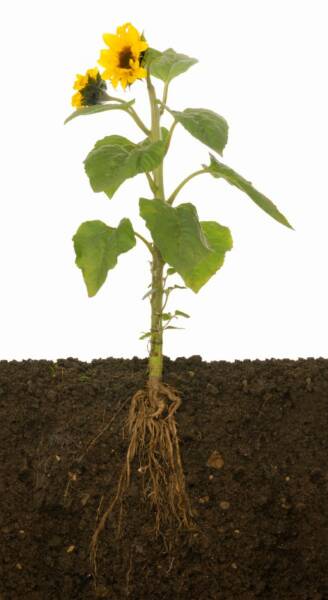There’s much we can learn about how nature communicates changes in habitat and how species react to such changes. Scientists are making daily discoveries that lead them to understand, that we in fact, understand so little about the natural world around us, but the more we learn, the more we come to understand how we as humans fit into the bigger picture.
Recently, Dutch ecologist Roxina Soler and her colleagues at the Netherlands Institute for Ecology discovered that subterranean and aboveground herbivorous insects can communicate with each other by using plants as telephones. Subterranean insects issue chemical warning signals via the leaves of the plant. This way, aboveground insects are alerted that the plant is already ‘occupied’.
Aboveground, leaf-eating insects prefer plants that have not yet been occupied by subterranean root-eating insects. Subterranean insects emit chemical signals via the leaves of the plant, which warn the aboveground insects about their presence. This messaging enables spatially-separated insects to avoid each other, so that they do not unintentionally compete for the same plant.
In recent years it has been discovered that different types of aboveground insects develop slowly if they feed on plants that also have subterranean residents and vice versa. It seems that a mechanism has developed via natural selection, which enables the subterranean and aboveground insects to detect each other. This avoids unnecessary competition.
Via these 'green telephone lines', subterranean insects can also communicate with a third party, namely the natural enemy of caterpillars. Parasitic wasps lay their eggs inside aboveground insects. The wasps also benefit from the volatile signals emitted by the leaves, as these reveal where they can find a good host for their eggs. The communication between subterranean and aboveground insects has only been studied in a few systems. It is still not clear how widespread this phenomenon is.
How species react to their changing habitat is also fascinating a A Kansas State University geography professor who is using satellite imagery to research how land use and land cover changes, affect human health and food security.
Doug Goodin uses remote sensing, in combination with other types of data, to monitor and forecast the spread of infectious disease. Goodin and other scientists discussed this subject at a workshop called, "Contributions of Remote Sensing for Decisions about Human Welfare," sponsored by the National Academies of Science in Washington, D.C.
Goodin's four year research project is sponsored in part by the National Institutes of Health through the Southern Research Institute in the United States and is co-sponsored by NASA.
According to Goodin, there is a confluence of change currently taking place across the globe. The world's population is steadily increasing, the global climate is changing and global ecology is being altered. All are thought to be related to the emergence of new diseases or re-emergence of old diseases, he said.
"One of the new paradigms for looking at this kind of thing is that we try to understand the disease as not just something that affects the human being," Goodin said. "We also try to understand its ecological context, its physical context and also its social context because there are certainly social human factors in any kind of disease."
Goodin said one reason for current interest in remote sensing is because it allows researchers to measure or note changes in the delicate balance of ecological systems. He is using the technology to study the re-emergence of hantavirus in the South American country of Paraguay.
The deadly rodent-borne virus is fatal 30 percent to 50 percent of the time in humans.
"By using remote sensing technology, we've been able to understand how human beings have changed the landscape the mice live in," Goodin said. "It forces different kinds of behavior for the mice. It brings them, perhaps, more in contact with each other, so the disease spreads horizontally in the rodent population, and more in contact with people, so there is a greater chance humans can contract this disease."
The reoccurrence of the hantavirus impacting humans re-emerged in the 1990s in North America, and is evidence of the delicate balance of ecological systems and the possibility of disease to emerge or re-emerge when those systems are altered. Goodin chose Paraguay to conduct his study because it is one place where there has been significant occurrence of the disease and also because there are several hantaviruses circulating there.
"Even though it is a relatively small country, Paraguay is a country with tremendous ecological contrast," Goodin said.
Goodin attributes the rapid deforestation of Paraguay's rain forest, the Atlantic forest, as a cause for the landscape changes. He said the Atlantic forest is more of a biodiversity hot spot than the more famous Amazon forest. He said the forest is rapidly disappearing because people need the land.
According to Goodin, remote sensing technology also can be used to reduce sickness related to poor water quality, such as diarrhea.
"That is something we can observe with remote sensing," Goodin said. "We can actually look at water bodies; we also can look at the context to see where pollutants in water are coming from. Armed with that kind of knowledge, we can actually suggest how try to eliminate these problems."
(30)
Don Elzer writes and comments about travel, current affairs and the natural world. He is the Director of the Wildcraft Forest Ecomuseum and Bearfoot Canada and is the editor of The Monster Guide which can be found at www.themonsterguide.com
He can also be reached by email at: treks@uniserve.com


